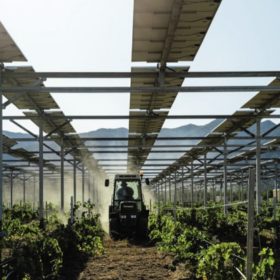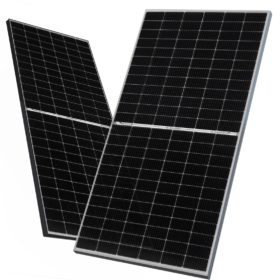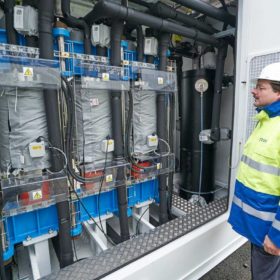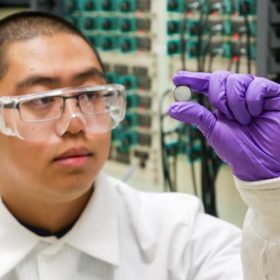Semi-transparent agrivoltaic module being developed by UNSW, Tindo
University of New South Wales researchers have teamed up with Tindo Solar to develop a line of semi-transparent modules, specialised for agrivoltaic cropping, which will use nanoparticles tuned to capture different parts of the light spectrum. “There is evidence you don’t need the full spectrum and some plants will work even better if you provide them with only part of the spectrum,” project lead and UNSW Associate Professor Ziv Hameiri tells pv magazine Australia. Crucially, he says, the project will also open a line between farmers, solar researchers and industry, creating the potential for mutual benefits.
NSW government settles on site for ‘super’ battery
Australia’s largest network battery will be built at the site of the former coal-fired Lake Munmorah Power Station as the New South Wales government accelerates its plans to fill the gap created by the fast-tracked closure of the country’s biggest coal generator.
JinkoSolar achieves 26.1% efficiency for n-type TOPCon solar cell
JinkoSolar has set another world record for n-type solar cell efficiencies with its TOPCon technology, this time reaching 26.1%. The new record was confirmed by China’s National Institute of Metrology.
Weekend read: Software to serve up more solar
Enabling future energy flows at the lower-voltage distribution level? Unlikely. Wide-scale hardware upgrades would cost billions if not trillions, especially in Australia’s far reaches. Software and digital solutions are identifying new cost-effective ways of letting more sun into the grid.
Flexibility as the key: Shell funded to transform energy demands of C&I sites
Shell Energy Australia has been awarded $9.1 million from the Australian Renewable Energy Agency to recruit at least 40 commercial customer sites, including shopping centres and supermarkets, to begin shifting how and when they use electricity – a demonstration of the potential of flexible demand.
Sodium-ion battery anode made from toxic hogweed
Russian researchers have transmuted poisonous Sosnowsky’s hogweed into high-grade anode material for sodium-ion batteries. The obtained material has a Coulombic efficiency of 87%, which is on par with the best reported results for hard carbons synthesised from other raw materials.
SunDrive lands $21 million to scale copper-based solar tech
World-beating Australian solar technology company SunDrive has completed a new $21 million (USD 13 million) funding round which will help commercialise its revolutionary solar cell technology that replaces silver with copper to improve solar panel efficiency and reduce costs.
EnergyAustralia reveals plan for new 500 MW big battery
Australian electricity gen-tailer EnergyAustralia will investigate the feasibility of installing a 500 MW/2000 MWh big battery energy storage system adjacent to its 1.4 GW Mount Piper coal-fired power station in New South Wales.
WA teams with ITM to explore electrolyser manufacturing potential
The Western Australia government is partnering with United Kingdom-based electrolyser manufacturer ITM Power and Germany’s Linde Engineering in a $450,000 (USD 278,106) study to develop a business case for the manufacturing of renewable hydrogen electrolysers within the state.
Novel anode material paves way for 15-minute EV charging
US researchers have developed a novel fast-charging battery anode material, and GM has revealed a new focus on battery R&D. The European Parliament, meanwhile, has issued a number of proposals for alternative fuels infrastructure.















